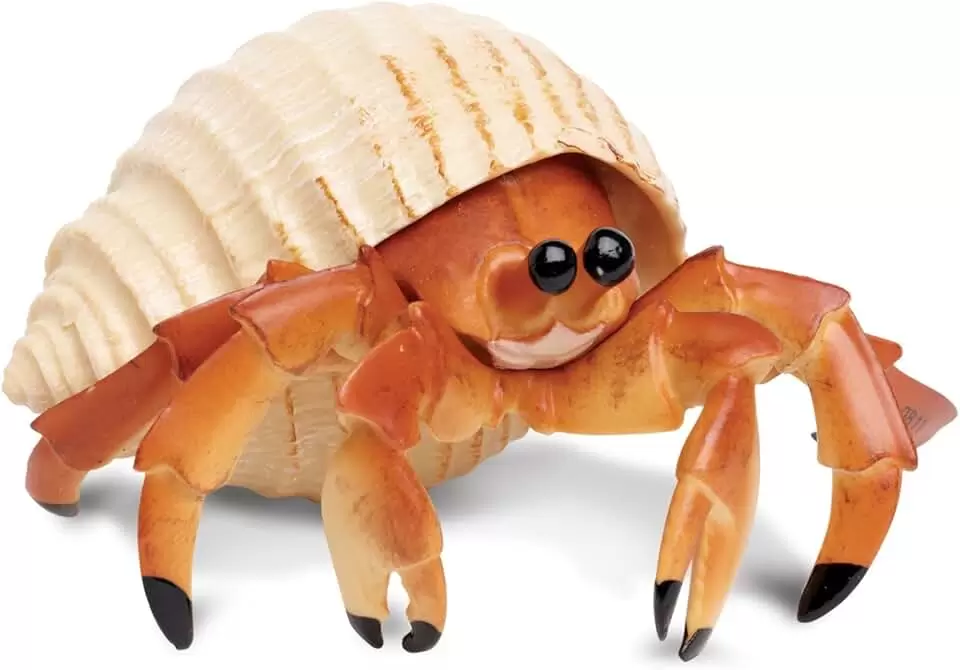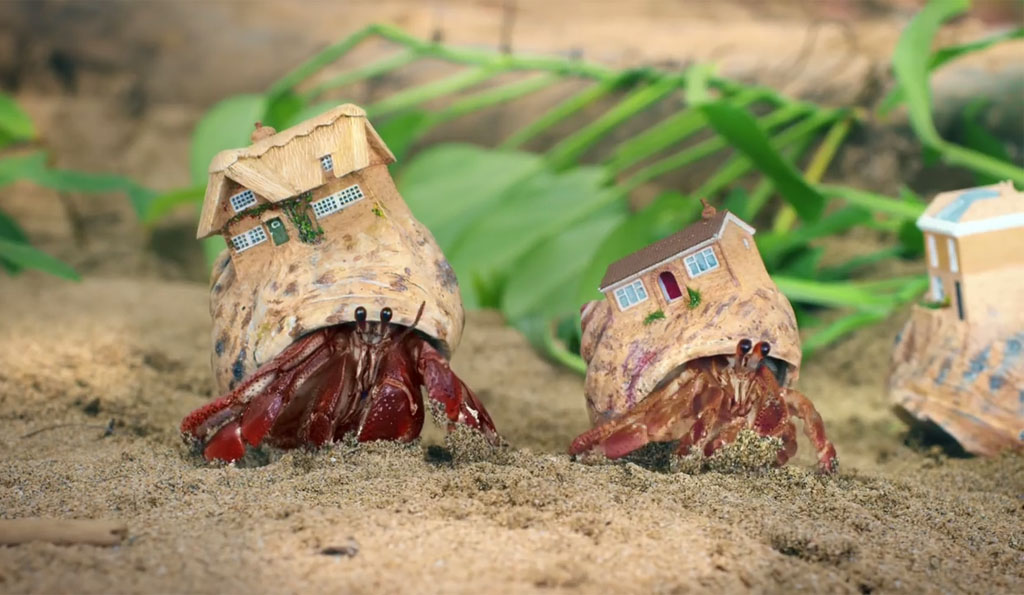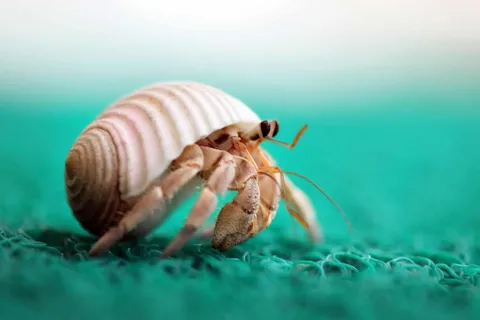Welcome readers! As animal lovers always seeking interactive new companions, many wonder can curious hermit crabs thrive as domestic pets? These strange crustaceans that scavenge tidepools have captured imaginations with their quirky shells.
But do their natural behaviors and needs align well with life in the home? Let’s examine what’s involved in hermit crab care in great depth so you can make an informed decision on if adopting these unusual animals is suitable for your lifestyle.
Providing Proper Housing
When keeping hermit crabs, their living space is absolutely crucial. These gregarious creatures do best in large communal setups that simulate their coastline habitat. An aquarium or terrarium tank with secure, tight fitting lid is required, as hermit crabs are adept climbers and will escape at any opportunity if not safely enclosed.
For tank sizing, at minimum 20 gallons is needed for 1 to 5 crabs. This provides enough room for each crab to claim its own territory while still interacting with others. For every additional crab after 5, add 10 more gallons to allow each crab sufficient personal space without overcrowding occurring.
Overcrowding cannot only cause undue stress that impacts health but makes it difficult for owners to accurately track individual crabs and implement proper healthcare.
When furnishing the tank, multiple factors must be addressed. First and foremost is substrate hermit crabs spend much of their days digging and burrowing. Play sand or coconut fiber substrates both work well for this purpose while maintaining humidity levels.
Next, providing fresh pools of both saltwater and freshwater large enough for full submersions is essential. Hermit crabs rely on bathing to stay hydrated and clean their gills.
Additionally, various hideaways and climbing structures made from materials like terra cotta flower pots, driftwood branches, or even decorative stacked shells offer seclusion and environmental stimulation.
Hermit crabs spend a great deal of time exercising their limbs and exploring. Without sufficient space, furnishings, and tank mates, they can become bored or stressed.
Moreover, maintaining ideal parameters for temperature and humidity within the enclosure is non-negotiable. This is best achieved through thick substrate bases, live or artificial plants to hold moisture, and snug fitting lids to prevent excess evaporation.
Humidity levels must read 70% or higher at all times using a hydrometer gauge. A gradient ranging from 75 to 80 degrees Fahrenheit allows crabs flexibility to thermoregulate as they prefer. Consistent monitoring and adjustments are necessary to avoid health issues.
Nutrition is Vital for Thriving Hermit Crabs
Much like their omnivorous tendencies in nature, hermit crabs have varied dietary requirements in captivity to receive crucial nutrients for growth, molting, and wellness. Their meals should include produce, protein, and calcium.
Herbivore biscuits or vegetables like sweet potatoes, carrots, green beans offer important hydration and fiber. Rotating these treats 2 to 3 times weekly prevents boredom and supports digestive functioning.
For protein, dry dog or cat kibble works well, but smelly dried shrimp, worms or crickets provide variety and stimulation a couple times a week. Fruit 1 to 2 times weekly such as mango or grapes adds extra hydration and vitamins.
Calcium sources like cuttlebone must also feature in their diets, as it facilitates healthy shell growth during ecdysis or molting periods. Many owners supplement by offering calcium powder or liquid mixes on food two to three times per week.
Avoiding avocado, citrus fruits, salty foods, or chocolate helps protect their sensitive digestive systems.
Additionally, taking life stages into account makes a notable difference. Growing juveniles need greater nutrition to power molts into adulthood versus older, more sedentary crabs.
Careful observation and adjustments ensure all nutrition requirements are met throughout their lifetimes usually 5 to 20 years on average depending on conditions.
Understanding Molting and Its Importance
Every 4 to 6 months, hermit crabs undergo a fascinating process called ecdysis to grow out of their previous shells into larger sizes. During the 2 to 3 weeks molt, a crab essentially liquifies and sheds its hard exoskeleton.
It then forms a new soft shell beneath before emerging to harden. This is a vulnerable period requiring privacy and stress free conditions to minimize risks.
Leading up to a molt, crabs will begin to show visible signs such as becoming inactive, hiding more, or refusing food. At this point, it should be separated from tankmates if aggression occurs between occupied and unoccupied shells.
Fully separating single crabs individually allows smooth, undisturbed molts.
As a new shell forms, owners must resist any urges to help or interfere which could damage the delicate shell. Once hardened, typically within a few days, regular activities and diet resume.
Handling should also be avoided for at least a few additional days until fully hardened. With support through each molt, crabs can successfully grow through all their instars into healthy adulthood over several years.
Evaluating Temperament and Behavioral Traits
When selecting hermit crabs, learning about their personalities aids properly matching needs to environment. Some key behavioral understandings for potential pet owners include:
- Hermit crabs are mostly nocturnal or crepuscular, meaning night and dawn/dusk are their highest activity periods. Interacting most at these times yields most interesting observations.
- Gentle handling can be enjoyed in short increments as they tend to prefer the security of their shells. Too much handling causes undue stress.
- While crabs may display curiosity towards owners’ hands, biting is rare due to eyes situated high on eyestalks outside their reach. Any nips could indicate an underlying health issue.
- Occasional squabbles over shells or territory between males may occur but usually involve bluff poses and not serious harm. Simply separating any feuding individuals until tensions ease avoids conflicts.
- Hermit crabs demonstrate social bonds through mutually grooming one another, sharing food finds, and touching antennae in greeting manners. Keeping several crabs together brings out natural group behaviors.
Overall, their peaceful temperament rather than defensive behaviors makes them excellent interactors for children or those seeking low risk pets.
However, their specific needs still require attention and research to thrive long-term in care versus risking pet store impulse buys.
Sourcing Quality Hermit Crabs and Quarantining New Arrivals
To maintain best health, purchasing from reputable online retailers or specialty brick and mortar tropical fish stores helps avoid wild caught or inhumanely farmed individuals who may arrive with hidden stress or illnesses. When choosing crabs, opt for brightly colored, active specimens appearing proportional sizes to their shells without missing legs.
Just as important, allow 4 to 6 weeks to house any new additions separately from existing colonies until fully acclimating and signs of disease have passed, if any. Provide the same optimized living conditions including fresh shells during this time. Gradually introducing by shell sharing entices acceptance into an established social group over direct placement.
While expenses start higher upfront than some other pets, dedicated care ensures rewarding relationships with personalities for many years to come. Initial investment into suitable housing and setup, healthy feeding schedules, preventative healthcare like quarantining new members supports their long lifespans.
As natural scavengers and omnivores adapted to captivity for decades in our modern world, hermit crabs bring unique curiosities when properly researched as potential companions.
Common Hermit Crab Questions Answered
Q: Why does my hermit crab change shells, and can this harm the other crab?
A: Called shell cracking or bricking, hermit crabs naturally seek snug shells as they grow. Temporary stresses look aggressive but cause no injury. Separating during molts prevents risks.
Q: What level of crab aggression should I expect living together?
A: Minor territorial spats between males competing for shells represent typical natural behaviors. Simple separation deescalates tensions without serious harm.
Q: How long does molting really take from start to finish?
A: The full molting process averages 2 to 3 weeks as old exoskeletons dissolve making way for new growth. But crabs regain activities gradually after 7 to 10 days of renewed shell hardening.
Q: How can I determine the gender of my hermit crabs?
A: Males feature one oversized claw while females have symmetrical small claws. Males also tend towards slightly smaller overall body sizes than females.
Hopefully this extensive look at hermit crab herpetoculture from a husbandry and behavioral standpoint provides helpful context in deciding if properly committing to their care aligns with your interests and lifestyle capabilities long-term. Please reach out with any remaining questions!
CONCLUSION
while hermit crabs make engaging pets for those willing to fully research and commit to their demanding lifestyle needs, one must realistically assess if they have the ability to consistently provide specialized care over many years. Their unique nutritional, environmental and social requirements differ notably from impulse pets.
Only those with suitable living spaces, patience and dedication to supporting hermit crabs holistically should consider adoption. With proper care, these charismatic crustaceans reward their keepers with insights into marine adaptation.









